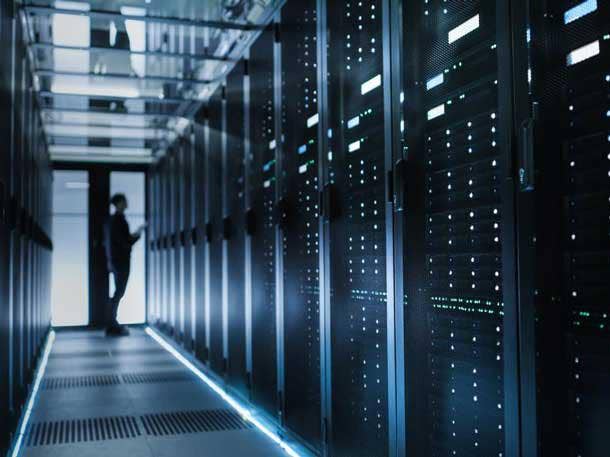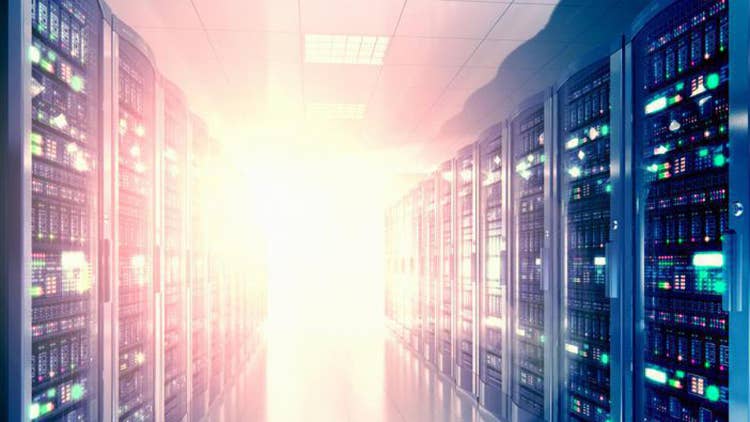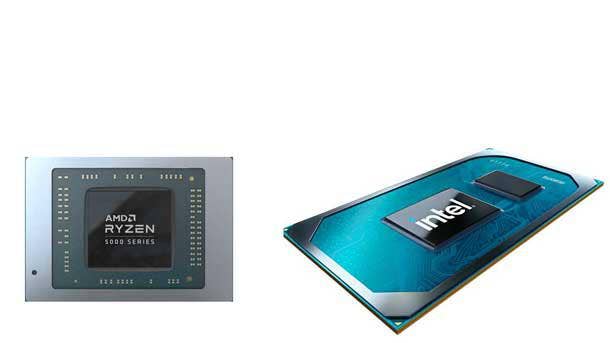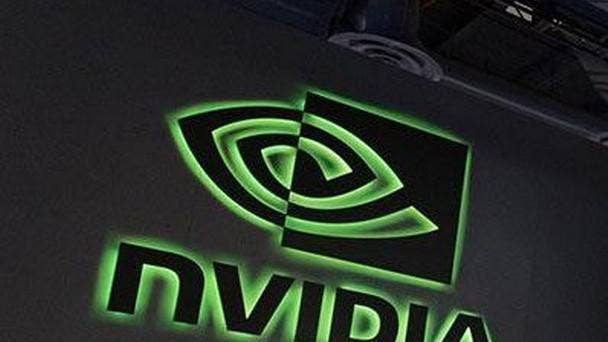10 Hot Data Center Technologies And Trends To Watch In 2021
From as-a-service and private equity spending to Dell Technologies and Intel, here are ten of the most important data center trends and technologies you should be following in 2021.

10 Data Center Market Trends You Should Be Following In 2021
As Dell Technologies CEO Michael Dell puts it, technology “prevented a complete societal economic meltdown” by enabling the world to work, learn and play from home during the global COVID-19 pandemic. Data centers played one of the most critical roles in stopping the world’s economy from potentially collapsing and continues to play an ever-increasing role as the “new normal” takes shape with remote working and a digital financial economy ahead.
The most important data center trends in 2021 include the world’s largest data center infrastructure providers starting to fight back against public cloud providers in a move to win back customer wallet share. On the innovation front, data center server CPU innovation is skyrocketing as competition heats up between Intel and AMD, while Nvidia positions itself to become a unique one-stop-shop data center provider.
Private equity is throwing billions at data center providers or acquiring them completely. All data center signs are pointing toward edge computing as well as more green, sustainable facilities and solutions.
With so much going on in the industry, CRN breaks down the ten biggest data center trends you need to be following in 2021.

Data Center As-A-Service Has Arrived, Targets Public Clouds
Arguably the biggest data center trend in 2021 is the momentum towards the new way customers want to buy and maintain data center solutions which is in a consumption-based, pay-per-use manner. While the leading public cloud providers have already been successfully offering consumption-based cloud IT for years, the globe’s leading data center infrastructure providers like Hewlett Packard Enterprise and Dell Technologies are doubling down on this movement unlike ever before.
Dell Technologies launched Apex last week, the $94 billion company’s new as-a-service consumption-based IT portfolio that includes Apex Data Storage Services and Apex Cloud Services. Dell’s top executives say Apex provides customers a better cloud experience around cost, control and simplicity compared to public cloud providers.
“We know that there are so many hidden costs in so many of these other models if you think about the public cloud, and all of these unexpected costs that customers run into -- the ability for our competitive advantage and transparent approach to pricing is something that customers are really responding well to,” said Allison Dew, Dell Technologies’ global chief marketing officer during Dell Technologies World this month.
The Takeaway : The world’s market leaders in servers, storage and hyperconverged infrastructure are fundamentally changing their sales motion to enable businesses to buy data center products in a new way, while at the same time looking to win back market share from public cloud providers who gained share in 2020 as many flocked to public clouds during COVID-19.

AWS, Microsoft, Google Spending And Expanding Like Never Before
The three public cloud titans are spending billions each quarter on building and equipping new hyperscale data centers across the world to extend their cloud services reach. In fact, Amazon, Microsoft and Google now collectively account for more than 50 percent of the world’s largest data centers.
The number of large data centers operated by hyperscale providers like AWS, Microsoft and Google increased to nearly 600 by the end of 2020, twice as many as there were in 2015. The COVID-19 pandemic has spurred record-breaking data center spending levels led by AWS, Microsoft and Google, reaching $37 billion alone in the third quarter of 2020.
In one of the boldest data centers plans in history, Microsoft unveiled last month its bullish plan to build 50 to 100 new data centers each year, including a $1 billion investment to build several hyperscale data center regions in Malaysia.
The Takeaway : AWS, Google and Microsoft will continue to spend billions throughout 2021 to increase market reach by expanding their data enter footprints into new geographies or regions with high cloud and data services demands.

Data Center Spending Picks Back Up, Will Hit $237 Billion
The global data center systems market will reach $237 billion in 2021, representing an increase of more than 7 percent year over year, according to IT research firm Gartner’s most recent IT spending forecast.
In 2020, many enterprises focused on simply keeping the lights on and running operational smoothly due to the COVID-19 pandemic. This led businesses to not focus heavily on data center infrastructure investments and large IT projects. However, the “temporary pause” button enterprises hit on data center spending will go away by the end of 2021, Gartner said, with data center infrastructure spending expected to grow year over year through 2024.
The Takeaway : With no decrease in demand for data as well as increasing demand for colocation and hybrid cloud opportunities, the data center market is poised for growth over the next several years.

Intel Vs. AMD Driving Data Center CPUs Innovation
Intel, the longtime leader in data center server CPUs, is now facing stiff competition with AMD on a global scale.
AMD recently saw its largest microprocessor share gain yet against Intel in the server market with EPYC processors in the first quarter of 2021, according to the latest x86 CPU market share report from Mercury Research. AMD’s server CPU share grew 1.8 points to 8.9 percent, reflecting the chipmaker’s report of strong EPYC sales and Intel’s decline in Data Center Group revenue.
This heavy competition is driving server CPU performance through the roof which greatly benefits data center customers around speed, agility, and new feature launches. Earlier this year, Intel launched its third-generation Intel Xeon Scalable CPUs, code name Ice Lake. Likewise, AMD launched its third-generation EPYC Milan processors this year, dubbing it as the highest-performance server processor in the industry.
The Takeaway : With server CPUs innovation reaching all-time highs due to competition between Intel and AMD, new use cases and services opportunities in the data center are opening up.

Nvidia To Become A Data Center Powerhouse
In April, Nvidia unveiled an Arm-based data center CPU for AI and high-performance computing it says will provide 10 times faster AI performance than one of AMD’s fastest EPYC CPUs, a move that will give the Nvidia control over compute, acceleration and networking components in servers. The new data center CPU, named Grace, creates new competition for x86 CPU rivals Intel and AMD when it arrives in early 2023.
Nvidia’s data center product road map ahead will consist of GPUs, data processing units (DPUs) and CPUs, with each product line receiving an updated architecture every two years.
Nvidia has increasingly viewed itself as a “data center-scale computing” company that has led it to pursue optimization of applications at a system level. While the company is seeing high adoption of its GPUs, Nvidia expanded into high-speed networking products last year with its $7 billion acquisition of Mellanox Technologies. Nvidia is also seeking to close on its $40 billion acquisition of Arm, whose CPU designs are being used for Grace. Additionally, Nvidia continues to expand its alliance with data center virtualization and software star VMware.
The Takeaway : Nvidia has the potential to disrupt the entire data center market over the next few years through next-level data center innovation and could forced market consolidation.

Increase In Automation And Robotics Deployments
The global pandemic has accelerated the need to make data center operations less reliant on human intervention aided by the influx of innovation around software automation and artificial intelligence. The data center industry is seeing the benefit of leveraging more intelligent, autonomous systems for simple tasks and distributed environments designed to increase capabilities.
According to AFCOM’s recent 2021 State of the Data Center Industry study, more than 40 percent of respondents said they’d be deploying robotics and automation for data center monitoring and maintenance over the next three years. Only 16 percent of respondents said they already have deployed robotics and automation in the data center, while 35 percent expect to deploy these solutions by 2024. Data center automation enables the routine workflows and processes of a data center -- such as scheduling, monitoring, maintenance and application delivery -- to be managed and executed without humans.
The Takeaway : Organizations are investing in automation and robotics in the data center so employees can bring more value elsewhere to the business or for a customer.

Private Equity Pumps More Money Into Data Centers
From private equity firms acquiring data center companies to investing billions to help data center providers scale, there’s no doubt that global investment firms will continue to double down on the market in 2021.
Private equity has been fueling data center providers growth objectives around scale and expanding global reach for years. For example, in 2019, private equity accounted for 80 percent of all data center acquisitions, focused on driving sales growth. Investors understand now more than ever that every IT trend -- from enabling data-driven outcomes to a shift to a digital economy -- all require infrastructure.
The Takeaway : In 2021, global investors perceive data centers as one of the best ways to make money as demand for cloud services and remote working skyrockets.

Enterprises Pick Cloud Infrastructure Services Over Data Center Products
Enterprises spent $130 billion on cloud infrastructure services globally in 2020, blowing by the $90 billion enterprises spent on data center products.
Enterprise spending on cloud infrastructure services reached nearly $130 billion in 2020, representing an increase of 35 percent annually, according to new data from Synergy Research Group. Enterprise spending on owned data center hardware and software fell 6 percent year over year to $89 billion. In 2019, the two market segments of cloud infrastructure services and data center hardware and software were almost equal in size at roughly $95 billion each.
While 2020 can be viewed as something of an anomaly due to the COVID-19 pandemic, the trends are “absolutely clear,” according to John Dinsdale, a chief analyst at Synergy Research Group.
“It took ten years for enterprise spending on cloud services to catch up with enterprise spending on data center hardware and software, then in 2020 the market for cloud services again soared,” said Dinsdale. “In the last ten years, CIOs and business managers have increasingly voted with their wallets and decided that cloud services are the way to go. … And we expect [that] to continue for many years to come.”
The Takeaway : Although everyone agrees hybrid cloud is the future, enterprises will continue to spend on cloud infrastructure services compared to, in most cases, traditional data center solutions in 2021 as COVID-19 forced many to rapidly shift to the public cloud.

Green Data Centers; Sustainability Taking Center Stage
The data center industry is in a unique position to accelerate the adoption of sustainable practices like renewable energy and using lithium-ion batteries to reduce climate change at a global level.
Customers, stakeholders, investors and even world leaders are increasingly demanding accountability on climate impact, by creating a compelling business incentive to embrace sustainability. Innovation in energy efficiency, such as with liquid cooling, as well as renewable power is being driven by the industry’s largest customers like AWS, Google, Facebook and Microsoft.
In 2021, data center sustainability has become front and center for enterprise customers which is raising the bar for the entire industry. With the digital economy taking shape, investors are also part of the green energy revolution as they seek to build greener IT portfolios. Data center colocation giant’s Equinix and Digital Realty have both raised funds using green bonds, with others expecting to follow suit.
The Takeaway : Data center operators will invest in buying and creating more sustainable products from liquid cooling to undersea data centers. It is key to note that there won’t be a trade-off in terms of buying the best data center product versus buying a more sustainable solution.

All Eyes On The Edge
With people flocking towards remote working and education, along with an influx of smart technologies inside offices and remote locations – the next data center frontier is at the edge.
Edge-specific data center providers like EdgeConneX are sprouting up while market leading infrastructure and power vendors are creating edge-specific products at rapid pace and scale. Companies from Dell and HPE to Vertiv and AWS are investing in new edge capabilities, services and vertical-specific edge reference architectures.
There is significant demand for edge computing in 2021 fueled by various technologies including AI, Internet of Things (IoT) and the emergence of 5G. Gartner predicts that by 2025, 75 percent of enterprise-generated data will be created and processed outside a centralized data center or cloud. This massive shift puts more emphasis on ensuring a secure, effective and reliable solution inside an edge data centers no matter what size.
The Takeaway : The massive investments from the biggest technology conglomerates in the world show there is a ton of expansion and market opportunities coming to the edge data center market in 2021 and beyond.